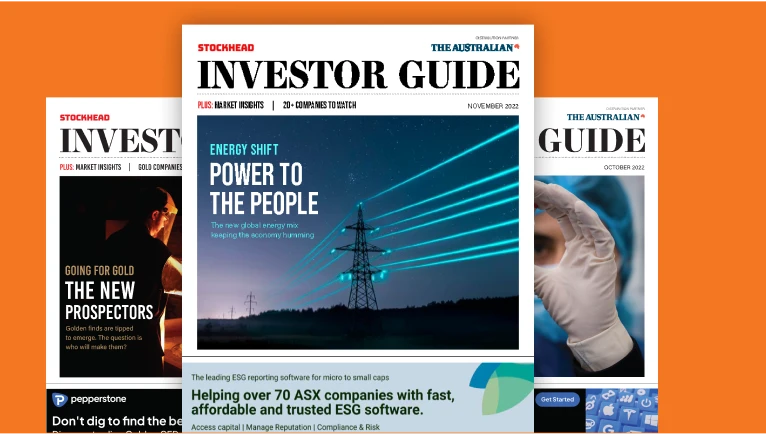US FDA medical device clearance demystified – what investors need to know

The FDA has three main clearances for medical devices. Pic: Getty Images
- FDA classifies medical devices based on the type of device and the level of risk it poses
- Three main FDA clearances for medical devices are 510(k), de novo and pre-market approval
- Several ASX companies have recently been granted FDA clearance or are looking to gain clearance
For ASX-listed medical device companies gaining clearance from the US Food and Drug Administration (FDA) is a critical step in reaching the world’s largest healthcare market.
FDA clearance is not only a gateway for companies to market their medical devices in the lucrative US market, it is often regarded favourably by other regulators around the world, helping companies gain credibility and potentially smoothing the path to regulatory certifications in other jurisdictions.
Medical devices must comply with the regulatory process so investors need to consider timelines, costs and regulatory hurdles when evaluating device companies.
Kea Dent brings deep expertise in navigating FDA clearances and global regulatory pathways for medical devices. She has more than three decades of experience in the medical device sector, having worked as a medical device manufacturer and regulatory consultant.
Dent’s journey kicked off in 1993 when she setup and managed a medical device manufacturing business which was sold to a Canadian competitor a decade later.
In 2003 she also established KD&A – an Australian based consulting firm which provides medical device regulatory solutions for manufacturers, sponsors, legal representatives and distributors around the world.
KD&A has supported more than 480 companies through the medical device regulatory and quality management system certification process.
Dent also holds Regulatory Affairs Certification (RAC) with the global Regulatory Affairs Professional Society (RAPS).
She told Stockhead the FDA classifies medical devices based on the type of device and the level of risk it poses.
FDA class I devices are low-risk with minimal oversight, class II devices are moderate-risk and require more testing and class III devices are high-risk and generally require extensive clinical data to prove safety and effectiveness.
From 510(k) to de novo – Different types of class
Dent said there were three main FDA clearances for medical devices including 510(k), de novo and pre-market approval (PMA).
She said the 510(k) process was built on demonstrating substantial equivalence (SE), meaning a new device must be shown to be as safe and effective as a legally marketed “predicate” device.
To qualify for a 510(k), a device must have the same intended use and either the same technological characteristics or different characteristics that do not raise new questions of safety or effectiveness.
“Everyone wants a 510(k) because it’s the quickest way to market, generally the clinical data requirements are minimal,” Dent said.
“A 510(k) is based on proving safety and effectiveness through comparing your device to an existing SE device cleared in the US.”
Dent said the challenge for manufacturers seeking 510(k) clearance was that the whole point of developing a new device was often to offer a competitive advantage.
“So, companies end up in a dilemma when meeting the FDAs 510(k) requirement for SE because it limits the organisation’s ability to market their product as unique to customers,” she said.
Other 510(k) options include Special 510(k) for modifications to existing devices, abbreviated 510(k) using recognised standards and third-party 510(k), where a review can be outsourced to an FDA-accredited body to speed clearance.
For class II devices with no suitable predicate, the de novo pathway – literally meaning new – provides a route to FDA clearance.
Dent said de novo was generally for moderate-risk class II devices with no SE, and once granted created a new regulatory category while granting a license to market the device.
If there’s no existing cleared device to compare it to, it can initially be treated as class III, or high risk.
However, Dent said the de novo regulatory process allowed certain devices to be reclassified class II.
“The de novo pathway gives manufacturers the middle ground and while it has been around for some time it wasn’t always that well used,” she said.
“It’s only in the last few years that manufacturers are becoming more comfortable with pursing the de novo pathway and understand the reason they’re in that category is they have a unique, innovative device.
“FDA Q-submission process is critical because the FDA provides clear information on the FDA expectations, particularly around clinical trial data.”
For higher-risk class III devices, Dent said the PMA pathway was generally required. This is the most stringent FDA review, demanding extensive clinical data to demonstrate safety and effectiveness, and grants approval to market the device.
“With a de novo device you’re saying our device is not the same as a 510(k) cleared SE device, it is a new class II device that has not been cleared before but it is not as high risk as a Class III PMA.”
Valuable FDA advice for PainChek
Dent has been working with PainChek (ASX:PCK) on US FDA de novo pathway for its PainChek Adult App, which uses AI facial recognition to analyse facial muscle movements and detect pain, even when it isn’t obvious.
On July 21 PainChek announced it had completed its final submission for de novo clearance for the app – which is designed for people with dementia or cognitive impairment who have limited communication.
Final regulatory clearance is expected in early October.
“In the case of PainChek we went through the Q-submission process and obtained agreement with the FDA on the study design, protocol and critical submission details,” Dent said.
Strong FDA approval year for ASX medical device companies
Despite earlier concerns that FDA cutbacks under the Trump administration could slow approvals/clearances and cause delays, it has been a strong year for FDA clearances for ASX medical device companies.
Among companies to gain approval is Perth-based regenerative medicine company Orthocell (ASX:OCC), which received 510(k) clearance in April for its flagship nerve repair product, Remplir.
Also in April Californian-based EBR Systems (ASX:EBR) received pre-market approval (PMA) for its WiSE CRT System – the world’s first and only leadless solution for left ventricular endocardial pacing.
The FDA’s approval followed submission of five detailed modules under the company’s PMA application and an inspection of EBR’s manufacturing facilities.
In March infection control company Nanosonics (ASX:NAN) was also granted FDA de novo for its flexible endoscope cleaning system Coris.
The company said the device was initially approved for colonoscopes and it was currently preparing follow-up predicate device 510(k) submissions to expand its use to cover other categories of flexible endoscopes.
EMVision seeking de novo clearance
EMvision Medical Devices (ASX:EMV) is among ASX medical companies seeking FDA clearance. The company is progressing a pivotal multi-site validation trial for its first device emu – a portable brain scanner designed to rapidly detect and differentiate types of stroke at the bedside.
The regulator has confirmed the novel technology is suited to the de novo pathway, and EMVision has engaged with regulator via the Q-submission process.
Results of the trial will form the foundation of EMVision’s planned de novo submission.
At Stockhead, we tell it like it is. While Painchek, EBR Systems and EMVision are Stockhead advertisers, the companies did not sponsor this article.
The views, information, or opinions expressed in the interview in this article are solely those of the interviewee and do not represent the views of Stockhead.

UNLOCK INSIGHTS
Discover the untold stories of emerging ASX stocks.
Daily news and expert analysis, it's free to subscribe.
By proceeding, you confirm you understand that we handle personal information in accordance with our Privacy Policy.








